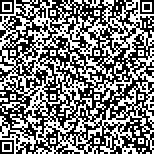| 引用本文: | 赵白云,张晶,孔文婷,叶英,何丹,田静.阿哌沙班类似物SU-142口服给药4周对Beagle犬的亚慢性毒性研究[J].中国现代应用药学,2018,35(4):475-478. |
| Zhao Baiyun,Zhang Jing,Kong Wenting,Ye Ying,He Dan,Tian Jing.Evaluation of Subchronic Toxicity of SU-142, an Analogue of Apixaban, After 4-Week Repeated Oral Administration in Beagle Dogs[J].Chin J Mod Appl Pharm(中国现代应用药学),2018,35(4):475-478. |
|
| |
|
|
| 本文已被:浏览 2337次 下载 1500次 |

码上扫一扫! |
|
|
| 阿哌沙班类似物SU-142口服给药4周对Beagle犬的亚慢性毒性研究 |
|
赵白云1, 张晶2, 孔文婷1, 叶英1, 何丹3, 田静4
|
|
1.杭州师范大学附属医院, 杭州 310000;2.济宁医学院附属医院, 山东济宁 272000;3.解放军第163医院, 长沙 410003;4.杭州市西溪医院, 杭州 310023
|
|
| 摘要: |
| 目的 研究阿哌沙班的新型结构类似物SU-142重复口服给药4周对Beagle犬产生的毒性反应。方法 40条健康Beagle犬按体质量随机分为溶媒对照组、SU-142低剂量组、SU-142中剂量组和SU-142高剂量组,每组10条,♀♂各半。低、中、高剂量组给药剂量分别为50,150,300 mg·kg-1,溶媒对照组给予0.5% CMC-Na,给药体积均为5 mL·kg-1。每天给药1次,共给药4周,恢复2周,期间对各项毒理学指标进行检测,并分别于首次和末次给药后1,2,4,8 h对血凝指标进行监测。结果 中剂量组1条犬首次给药后开始出现呕吐症状,至第7天恢复,未见其他异常反应。由于该症状比较轻微,且发生率低,认为是动物的个体差异导致的偶发性反应。其他动物的一般体征均未见明显异常。血凝学检测结果显示,SU-142处理组的凝血酶原时间(PT)和凝血酶时间(TT)自首次给药后1 h开始上升,给药期间显著高于溶媒对照组,至末次给药后4 h达峰,至此,高剂量组PT和TT均为溶媒对照组的约2倍,呈现明显的量效和时效关系。活化部分凝血活酶时间(APTT)给药后,均呈现剂量依赖性升高,但时效关系不明显。停药2周后,PT、TT和APTT基本恢复至基础水平。其他心电图、血液学、血液生化和病理组织学等指标均未见明显的与SU-142处理相关的改变。结论 SU-142口服给药4周对Beagle犬的主要毒性靶标为凝血系统,为SU-142药效作用的延伸和放大所致,作用可逆。本研究未发现供试品作用机制以外的脱靶毒效应。 |
| 关键词: 阿哌沙班 抗凝 Beagle犬 重复给药 毒性 |
| DOI:10.13748/j.cnki.issn1007-7693.2018.04.004 |
| 分类号:R965.2 |
| 基金项目:浙江省自然科学基金项目(LQ16H290003);浙江省中医药科技计划项目(2015ZB092) |
|
| Evaluation of Subchronic Toxicity of SU-142, an Analogue of Apixaban, After 4-Week Repeated Oral Administration in Beagle Dogs |
|
Zhao Baiyun1, Zhang Jing2, Kong Wenting1, Ye Ying1, He Dan3, Tian Jing4
|
|
1.The Affiliated Hospital of Hangzhou Normal University, Hangzhou 310000, China;2.Affiliated Hospital of Jining Medical College, Jining 272000, China;3.The 163 Central Hospital of PLA, Changsha 410003, China;4.Xixi Hospital of Hangzhou, Hangzhou 310023, China
|
| Abstract: |
| OBJECTIVE To evaluate the toxicity of SU-142, an new analogue of apixaban, in Beagle dogs following repeated oral administration for 4 weeks. METHODS The 40 Beagle dogs were randomly divided into 4 groups included control group and SU-142 (50, 150, 300 mg·kg-1) groups with 10 animals (5 male and 5 female) in each group. Dogs were treated orally once a day for 4 weeks with SU-142 (50, 150, 300 mg·kg-1) or 0.5% CMC-Na as vehicle with a volume of 5 mL·kg-1, following a recovery period of 2 weeks. During the experiment, toxicological indexes were detected, and the coagulation indexes were monitored 1, 2, 4 and 8 h after the first and last administration. RESULTS Only mild vomiting occurred in a dog in 150 mg·kg-1 group after the first administration, and last for 7 d, without other abnormal reactions. Due to the lower incidence and mild degree, vomiting was seen to be not related with SU-142. Coagulation test showed that prothrombin time (PT) and thrombin time (TT) were significantly increased at 1 h after the first administration, and lasted through the whole treatment with markedly dose-effect and time-effect relationship. PT and TT achieved to the peak at 4 h after the last administration, while PT and TT in 300 mg·kg-1 group reached approximately 2 times of control. Activated partial thromboplastin time (APTT) also showed a significantly increase with a dose-effect relationship. After recovered for 2 weeks, PT, TT and APTT fell to baseline. No other marked changes were observed in electrocardiogram, hematology, clinical chemistry and histopathology. CONCLUSION The main toxic target of SU-142 is coagulation (increased PT, TT and APTT), which should be an amplification of the anti-coagulation of SU-142. The toxic effect is reversible. The study don't find the effect of the miss target effect outside the mechanism of the trial product. |
| Key words: apixaban anti-coagulation Beagle dog repeated administration toxicity |
|
|
|
|
